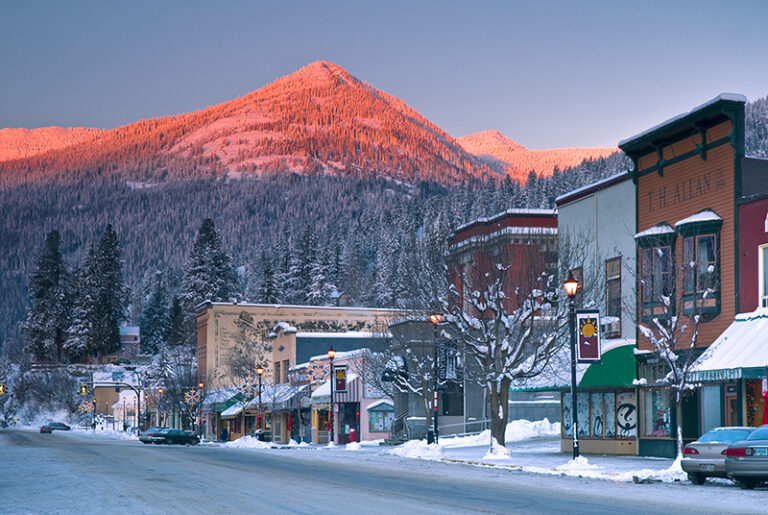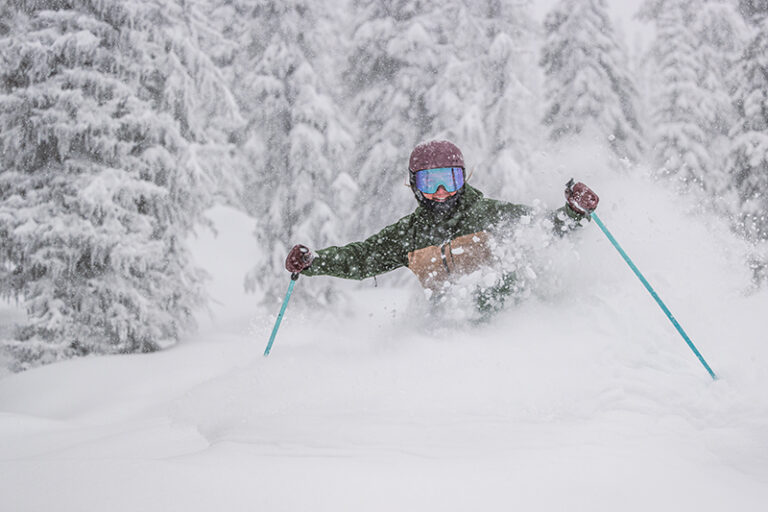Hells Canyon National Recreation Area (NRA), the deepest canyon in North America, plunges nearly 8,000 feet from He Devil in Idaho’s Seven Devils Range to the Snake River. Already popular as a jet boating, rafting, and backpacking paradise, it may surprise you to learn there are also miles of gated roads and abandoned ranches in its depths and folds that can be explored by bike. A friend and I set out in early November 2017 on our loaded plus size-tired rides to seek out a little-known hot spring and a ton of solitude.
The north entrance to the Hells Canyon NRA on the Oregon side is delineated by only a cattle guard and barbwire fence and is accessed via Asotin, Wash., along the Snake River and past Heller Bar and the Grand Ronde River. We start the trip with a 5-mile ride up Horse Creek Road—the old trail connecting the Lewis and Clark Valley with Enterprise, Ore. We top out at 4,600 feet and consider our imminent descent into a gorge deeper than the Grand Canyon. “This is exactly what I needed this weekend,” says my riding companion, an outdoor education faculty member at the University of Idaho.
That’s the thing about canyons—unlike mountains, you put forth all your effort getting out rather than going in. This meant a lengthy hike-a-bike on the way out, an ominous thought when we woke the next day. Canyons are also warmer, making a November trip into Hells Canyon possible and preferable since both rattlesnakes and poison ivy are both less thick. Rugged and inaccessible, we relish the idea that we may have this vast “wilderness” to ourselves and think of our hero, Edward Abbey. We think he would appreciate it, too.
After wearing out a brake pad and losing 3,200 feet in just 7.5 miles, we end up at Jim Creek Ranch, which is now used only seasonally and solely by the forest service. We notice the enormity and sheer silence of the surrounding area and compliment ourselves on our choice of bikes and bikepacking gear to get us to this place. We set up camp, ditch the bikes, and hike along trails carved and blasted from rock by the Civilian Conservation Corps in the 1920s and 30s. We pass ancient Nez Perce pit houses, the silence only broken by the occasional brassy warble of jet boat engines reverberating off 250 million year old basalt. Wary of an early nightfall, we make our way back. The trail is hard to follow, with game and stock trails crisscrossing the terrain. Recent wildfires and grasses further conceal the trail.
Dinner consists of packaged curries and rice, kippered snacks, salami, wine, and whiskey. An owl swooshes past. The stars are brilliant. We manage to chat until the weariness in our legs sends us to our tents. Mice and packrats shuffle here and there, but otherwise we hear nothing.
In the morning, we realize we both forgot toilet paper and toothpaste, but it’s okay because we have hot water on our minds. The path, used more by migrating elk than people, is choked by blackberry brambles that fray our clothes and nick our exposed skin. We pass trees with fresh, massive scratches: bear. Chuckar blow up at our feet like grenades and flutter away in cackling masses. When we finally stumble to where the soaking pool should be, it seems to have vanished. Runoff from last winter has erased the cobble-lined tub. Fortunately, the 101° hot seeps remain and are easily located. In quick time, we dig another ankle soaker. I notice the nearby rock-lined enclosure, purported to be a soaking pool used by the Nez Perce. Our feet, soaked and nursed by the mineral-rich waters, are now ready for the 4,800 feet of elevation gain in 5.5 miles.
Our minds, however, are elsewhere. We try to ride but, when the granny gear isn’t enough, we end up pushing our 45-pound bikes. Thoughts of Reuben sandwiches, Philly cheese steaks, and pitchers of beer keep us going. Eventually, we reach the canyon rim and eagerly await 4G so we can Instagram and Strava our journey and start dreaming up the next one. // (C. J. Filip)
C. J. Filip is a National Guardsman and health inspector who lives in Moscow, ID with his girlfriend and six chickens on a self-proclaimed “urban homestead.” This is his first story for Out There Outdoors.
Feature photo: C. J. Flip
Originally published in the March 2018 print edition of Out There Outdoors under the title “Hell on Wheels: Bikepacking Hell’s Canyon’s Forgotten Corner.”













